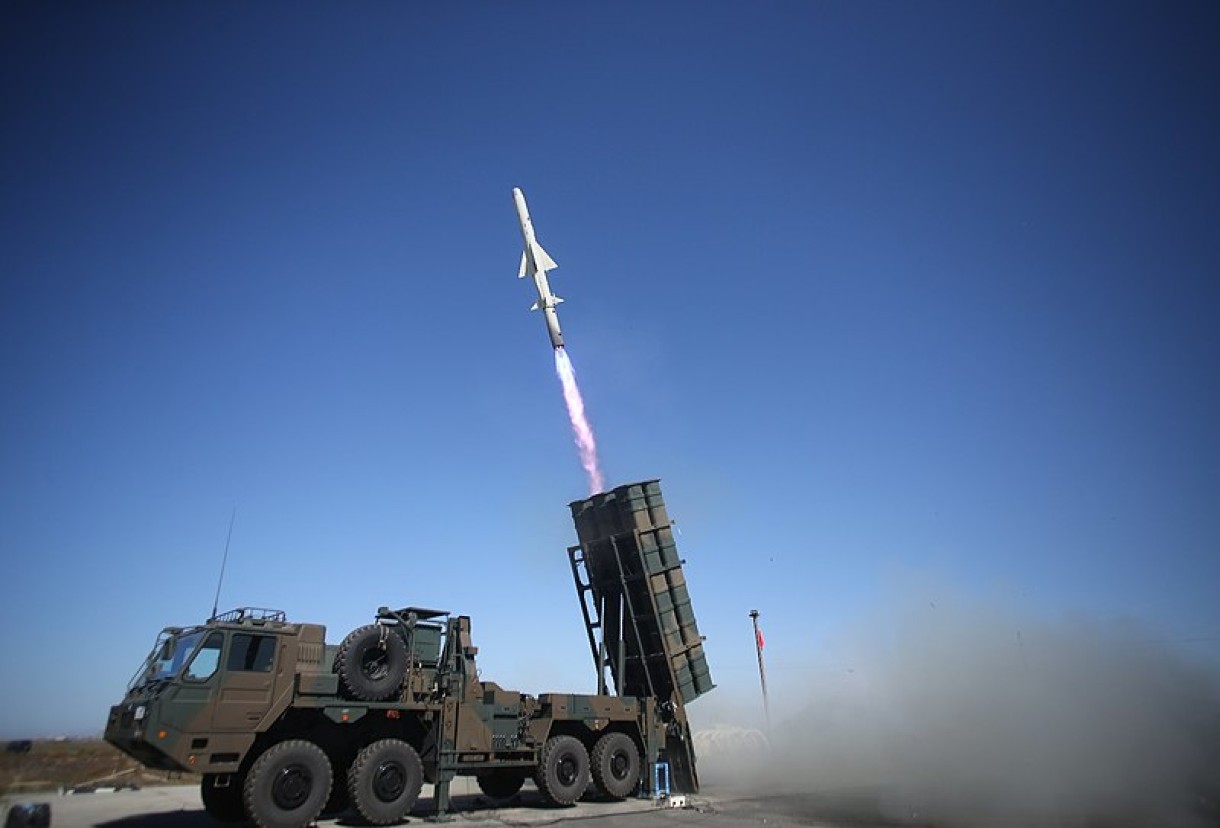The Japan Air Self-Defense Force (JASDF) conducted a missile interceptor drill near a nuclear plant on the Sea of Japan coast in Fukui prefecture on Monday, amid concerns over North Korea’s recent test launches.
“On November 28, the 12th Fire Unit, 4th Air Defense Missile Group (Aibano Sub-base), and the 6th Base Air Defense Squadron (Komatsu Air Base) of Koku-Jieitai (Japan Air Self-Defense Force) conducted PAC-3 and Base Air Defense Squadron maneuver deployment training at Nagaihama Beach, Fukui Prefecture,” the JASDF said in a statement.
The statement also said that the purpose of this training was to “maintain and improve the capability to deal with ballistic missiles.”
It added that it was the first time the training took place on the Sea of Japan side with the participation of the Base Air Defense Squadron.
North Korea has conducted dozens of missile test launches since the start of 2022, firing several missiles at once on some occasions. Earlier in November, North Korea launched more than 20 short-range missiles.
Pyongyang said its missile tests were in response to “provocations” by the United States and its regional allies, South Korea and Japan.
Meanwhile, Japan’s defense ministry is considering equipping its submarines with long-range missiles as a way to increase their retaliatory strike capability, Japanese media reported on Monday.
Submarines currently in service of the Japan Maritime Self-Defense Force (JMSDF) are low-observable. If equipped with modified Type 12 missiles, they will be able to deliver strikes on enemy bases while staying out of reach of their defense, the Nikkei newspaper reported.

Japan is working on modifying the Type 12 anti-ship missiles in a way to increase their range beyond 1,000 kilometers (621 miles) for a retaliatory strike from within a safe zone.
The newspaper added that new missiles would be developed under the so-called stand-off missile program as a replacement for the US ground ballistic missile defense system Aegis Ashore, which Japan stopped using in 2020 due to the risk of upper-stage debris falling on residential areas.
Earlier reports said that these missiles could be deployed on ships and fighter jets, while now Japan’s military was also looking into fitting the missiles onto its submarines, Nikkei said.
Existing submarines have torpedo and anti-ship systems for horizontal launch. According to the media, new long-range missiles will require additional space and maybe even vertical launch systems.
The research started in 2020 does not rule out the possibility of creating an experimental submarine, while the modernized equipment is scheduled to launch as early as in the 2030s, Nikkei said. Ground deployment of longer-range Type 12 missiles will start in 2026, while ships and fighter jets are scheduled to be equipped with the new weapon starting in 2026 and 2027.
Japan is also looking into acquiring US-made Tomahawk cruise missiles as well as designing its own hypersonic rockets, the newspaper said. The government reportedly believes that it will need 1,000 long-range missiles to effectively deter China and North Korea.
Japan To Launch 50 Military Satellites?
Japan plans to start establishing a unit consisting of 50 satellites to monitor military targets and their movement from a low altitude in two years, the Japanese newspaper Yomiuri Shimbun reported on Monday.
The report said that small optical and radar satellites would be launched starting from the 2024 fiscal year, which will last from April 1, 2024, to March 31, 2025.
The optical satellites would be able to take high-quality photos and videos of the Earth’s surface in good weather during the daytime, and the radar satellites, regardless of the time of day and weather conditions, would take radar images, the newspaper also said.
It added that the Japanese Defense Ministry was planning to create a network for detecting Russia and China-developed hypersonic weapons with planning blocks, but the first test device would be launched no earlier than 2027 because of the time-consuming manufacturing of an infrared sensor.
Currently, Japan’s medium-term budget spending on defense amounts to 27.47 trillion yen (over $195 billion). The country’s defense ministry has reportedly proposed an increase in the program to around 48 trillion yen to improve the country’s defense capability, but the finance ministry has suggested a sum of 35 trillion yen as the most realistic amount.
Earlier in November, the Kyodo news agency reported that Japan was planning to downsize two destroyers equipped with the US-made Aegis ballistic missile interceptor systems to increase the operability and seamlessness of the vessels.
In August, Japan was considering equipping two new warships with the Aegis combat information and control system. The new destroyers were expected to operate in the Sea of Japan to monitor, among other things, possibly North Korean missiles.
Via: Sputnik News Agency




